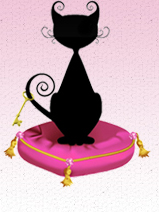Squirting. Psychotropic medicines commonly create anorgasmia as side-effect.
Medications and orgasm
Psychotropic medications commonly create anorgasmia as effect. A lot of these medications antidepressants and antipsychotics either (a) interfere with all the binding or action of dopamine at its D2 or D4 receptors, correspondingly (Stahl, 1999), or (b) improve the known degrees of serotonin in certain synapses by inhibiting its reuptake.
Dopamine an orgasm вЂaccelerator’ numerous proof points to dopamine because the neurotransmitter that is key in stimulating orgasm in people. Therefore, management associated with the dopamine precursor L dopa, dopaminergic agonists ( e.g. apomorphine), dopamine releasers ( ag e.g. amphetamine), or dopamine reuptake inhibitors ( e.g. cocaine or bupropion) facilitate the phrase of orgasm in women and men. Conversely, administration of antipsychotics impair orgasm, by blocking dopamine that is postsynaptic (see Komisaruk et al., 2006). Dopamine synthesising neurons that originate into the reduced brainstem (particularly the ventral area that is tegmental are triggered during ejaculation in guys, as calculated by animal imaging (Holstege et al., 2003). a significant projection for the dopamine neuron axon terminals is always to the nucleus accumbens of this forebrain. This nucleus is triggered during orgasm in females, as calculated by fMRI (Komisaruk et al., 2004). Hence, activation regarding the dopaminergic system associated with the mind evidently participates within the manufacturing of orgasm in females and guys, on such basis as pharmacological practical mind imaging, and neuroanatomical studies. In keeping with this part of dopamine, hypersexuality happens to be reported in situations of Parkinsonism addressed with dopamine precursor or drugs that are agonistBowers et al., 1971). Acute administration of medications that increase dopaminergic task just sporadically causes orgasm into the absence of other facets. Nonetheless, intravenous injection of cocaine, which rapidly advances the launch of dopamine at its neuronal terminals into the forebrain, can cause the вЂcocaine rush’ that individuals report as experiencing comparable to orgasm that is genitalMiller & Gold, 1988).
Serotonin an orgasm вЂbrake’ Antidepressive medications (e.g. the SSRIs, which increase the accumulation of serotonin in synapses by blocking its reuptake in to the neuron terminals from where it absolutely was released) have a tendency to produce anorgasmia. Inhibition of orgasm is mediated by relationship of serotonin aided by the serotonin 2 receptor subtype (Haensel et al., 1995). This process that is molecular critically active in the inhibition of orgasm agents such as cyproheptadine that block the action of serotonin very nearly straight away counteract the inhibitory effectation of antidepressants on orgasm. The вЂexception that proves the guideline’ can be found in the full case of nefazodone, which, unlike one other SSRIs, cannot inhibit orgasm. Nefazodone, as well as blocking the reuptake of serotonin, also blocks the serotonin 2 receptors, therefore counteracting the end result for the elevated synaptic levels of serotonin, and therefore avoiding the serotonin from inhibiting orgasm (Stahl, 1999). Conversely, buspirone, which decreases the production of serotonin to the synapse, facilitates orgasm, thus further giving support to the serotonin braking system concept. The stopping effectation of serotonin on intimate reaction is reported to be utilized вЂoff label’, to advantage that is therapeutic by dealing with premature or very very very early ejaculation with SSRI antidepressants.
The part of sex hormones
The sex hormones oestrogens and androgens characteristically act with latencies of days providing a facilitatory background for orgasm by contrast with the action of neurotransmitters, which change neuronal excitability almost immediately upon their release into synapses and thereby generate orgasm. In males, a scarcity of intercourse steroids ( e.g. resulting from aging or after medical elimination of the testes) can lead to anorgasmia and a decrease in intimate interest. The part of intercourse hormones in females isn’t as clear. Early studies concluded that bilateral oГ¶phorectomy (i.e. Removal of both ovaries) rarely resulted in lack of anorgasmia or desire. Nevertheless, current studies report decreases in intimate drive and pleasure after oГ¶phorectomy ( e.g. Braunstein et al., 2005). Oestrogen (oestradiol) therapy doesn’t correct these nudechat results, as they are almost certainly because of a reduction in plasma degrees of testosterone caused by a decrease into the androgen release that generally does occur through the ovaries. Treatment with testosterone, alone or perhaps in combination with oestradiol, restores interest that is sexual pleasure (orgasm regularity) generally in most among these ladies (Bellerose & Binik, 1993). Androgen (testosterone) treatment therapy is the standard therapy for hypogonadal guys complaining of anorgasmia (Steidle et al., 2003). Transdermal testosterone spots or ties in, which gradually and steadily launch the androgen in to the blood circulation, have actually already been utilized effectively. But as the effectiveness of testosterone to boost intimate behavior in hypogonadal men is incontrovertible, supplemental dosing with testosterone will not raise the regularity or quality of sexual climaxes in males whoever androgen levels are вЂnormal’ (O’Connor et al., 2004).




